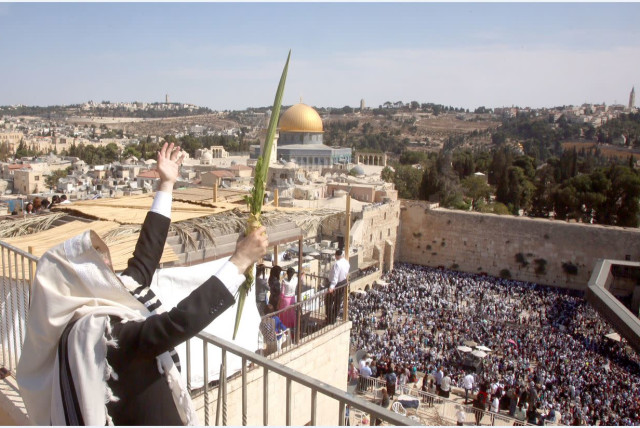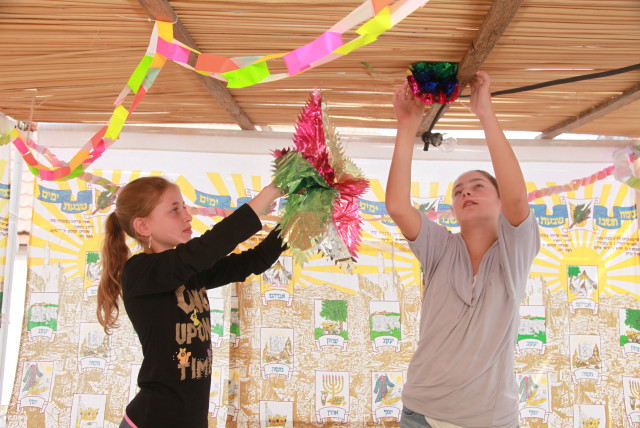How 'The Holiday' Sukkot is celebrated throughout the ages - opinion

Sukkot, as a holiday, is imbued with significance.
When I was a kid, we had school during Hol Hamoed, the intermediate days of Sukkot.
Hard to imagine that happening nowadays. Today, the quintessential Jewish vacation season is Sukkot. In the Jewish world, the Sukkot school break is more significant and longer than the Passover or Hanukkah school breaks. In many educational institutions, it begins just before Yom Kippur and stretches until after Sukkot.
Sukkot celebrations have changed significantly – well within my lifetime. School during Sukkot is just one example.
Take the huts, the booths, the actual, structural sukkah. Not so long ago, the actual sukkah was simply not as prevalent in the United States as it is today. Every religious Jewish home did not build a sukkah.
While there were many reasons for this lapse in tradition, the most probable is that in the suburbs these huts looked strange in a society where “fitting in” was so important. In cities, where most Jews lived in apartment buildings, there was no place to build them, save for the proverbial fire escape, and no inclination by landlords to provide a sukkah as one of the services of the building.
Fragile, decorated, crowded sukkot were relegated to synagogues and schools. Every synagogue had one, two, or three open areas where they would erect their sukkah. Newly designed synagogues had a permanent sukkah that simply needed the temporary covering, or s’chach, to be placed on top.
And schools had sukkot. And that is why there was school on the holiday. If there was no school, then the central element of the holiday for children, principally decorating and eating in the sukkah, would be absent from their lives.
Our Jewish world changed
Today, religious families build sukkot and travel to places that have sukkot. No worries about your child missing school because there is no school. Sukkot are everywhere. And almost everybody knows about “the holiday with the huts”.
The Jewish community has come of age.
And new traditions – like the Sukkah Hop are born. A sukkah hop is a kids’ parade from home to home, from sukkah to sukkah, according to your grade or age bracket, during which you are treated to a bit of Torah learning and a lot of candy eating. The competition to have your sukkah on the parade path is huge. And the amount of booty kids collect puts trick-or-treating to shame.
And the greater world has changed.
Despite the rise in antisemitism, in a large number of communities, Jews are no longer afraid to display their Jewishness. They may be wary, but not afraid. Walking down streets and across boulevards carrying a lulav and etrog has become a casual occurrence. The Jewish state has enabled Diaspora Jews to follow age-old traditions without embarrassment. And with certain improvements.
In warm clients, it is not unheard of to have an air-conditioned sukkah. In colder climates, like in Northern Europe, a sukkah often comes equipped with heaters and temporary roofs that are able to be lifted up so that the weight of falling snow does not fall into and collapse the sukkah. In Israel, especially in haredi neighborhoods, sukkot are everywhere and anywhere where there is space – even hanging askew, nearly falling off buildings.
ACCORDING TO Jewish tradition, Abraham was the first Sukkot celebrant. The Book of Jubilee writes: “And Abraham built sukkot for himself and his servants in the seventh month, and he was the first to celebrate the festival of Sukkot in the Holy Land.”
In Genesis 33, Jacob, Abraham’s grandson, went to a place called Sukkot, while Esau went to the place called Seir. In this case, it was a place where they probably already had sukkot erected, like a campsite.
Traditionally, Sukkot is referred to as Hahag – The Holiday. During “The Holiday,” massive water celebrations took place in Jerusalem. The Talmud, in a beautiful hyperbole, explains that: “Anyone who has not seen the celebration at the water-drawing of Sukkot during their lifetime, has simply never seen real celebration.”
Each night, in addition to the flesh and blood guests we invite to our sukkah, symbolic guests are invited. Seven guests in total – Abraham, Isaac, and David, to name a few. In some communities, a candle is lit, and on each successive night, an additional candle is added, culminating with seven candles, bringing light to the sukkah to enhance the comfort of the guests, even in the days before electricity. Almost sounds like Hanukkah. In some communities, seven candles are lit every night.
Actually, I’m not sorry that I had to attend school during Sukkot, and I am glad that nowadays, most children do not. Sukkot, as a holiday, is imbued with significance. And the ability that we now have, as a community, as a people, to celebrate openly makes me happy. It makes me proud.
Happy Sukkot, Chag Sameach, to all.
The writer is a columnist and a social and political commentator. His new TV show is Thinking Out Loud on Jewish Broadcasting Service, and his latest book is Thugs.
Jerusalem Post Store
`; document.getElementById("linkPremium").innerHTML = cont; var divWithLink = document.getElementById("premium-link"); if (divWithLink !== null && divWithLink !== 'undefined') { divWithLink.style.border = "solid 1px #cb0f3e"; divWithLink.style.textAlign = "center"; divWithLink.style.marginBottom = "15px"; divWithLink.style.marginTop = "15px"; divWithLink.style.width = "100%"; divWithLink.style.backgroundColor = "#122952"; divWithLink.style.color = "#ffffff"; divWithLink.style.lineHeight = "1.5"; } } (function (v, i) { });


